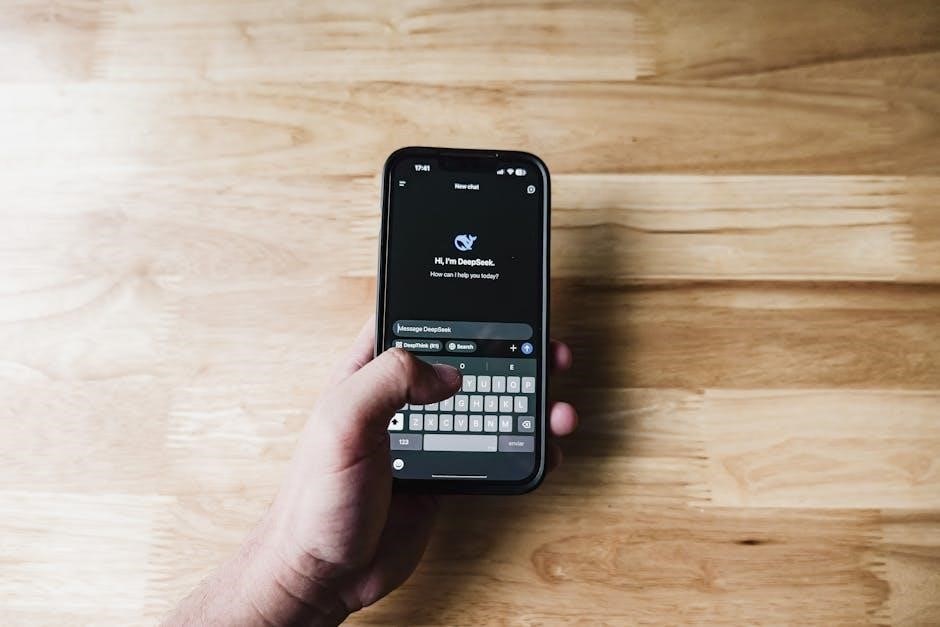George Foreman Grill User Guide: A Comprehensive Overview
Welcome to the ultimate resource for mastering your George Foreman Grill! This guide provides comprehensive information on its use, care, and maintenance․ Discover grilling techniques, safety precautions, and troubleshooting tips for optimal results․
The George Foreman Grill, a portable electrically heated grill, has revolutionized indoor grilling․ Promoted by the two-time world heavyweight boxing champion, George Foreman, it’s designed for lean, fat-reducing cooking․ This user guide provides you with all the information you need to operate and maintain your grill effectively, ensuring delicious and healthy meals․
Inside, you’ll find details on setting up, using, and cleaning your grill, as well as troubleshooting common issues․ Whether you’re a new owner or a seasoned user, this guide will enhance your grilling experience․ Learn about optimal temperatures, grilling techniques, and safety guidelines to make the most of your George Foreman Grill․
With the right knowledge, you can enjoy perfectly grilled food quickly and easily․ Dive in and discover how to maximize your grill’s potential, making meal preparation simpler and healthier․

Understanding Your George Foreman Grill
Before grilling, familiarize yourself with your George Foreman Grill․ Knowing its features and setup ensures safe and efficient operation․ Let’s explore its components and preparation for a seamless grilling experience․
Key Features and Components
The George Foreman Grill boasts several key features designed for convenient and healthy cooking․ The non-stick grill plates are a primary component, minimizing the need for oil and facilitating easy cleanup․ These plates are often angled, allowing fat to drain away from the food into the drip tray․
The drip tray, usually made of plastic, collects excess grease and juices, reducing fat content in your meals․ Some models feature removable grill plates for easier cleaning, while others have fixed plates․ The hinged lid accommodates various food thicknesses, ensuring even cooking․
Temperature control, if available, allows for adjusting heat levels for different foods․ A power indicator light signals when the grill is on, and a preheating indicator shows when it’s ready․ The grill’s compact design makes it ideal for small kitchens and easy storage․
Initial Setup and Preparation
Before using your George Foreman Grill for the first time, proper setup is crucial․ Begin by carefully unpacking all components, including the grill base, grill plates (if removable), and drip tray․ Ensure all packaging materials are removed․ Wash the grill plates and drip tray with warm, soapy water, then dry them thoroughly․
Place the grill on a stable, heat-resistant surface away from flammable materials․ Insert the drip tray into its designated slot․ If your model has removable plates, ensure they are securely attached․ Plug the grill into a grounded electrical outlet․
Preheat the grill according to the manufacturer’s instructions, typically indicated by a light․ This initial preheating helps remove any residual manufacturing oils․ Now your grill is ready․
Operating the Grill
Mastering your George Foreman Grill involves understanding preheating, temperature control, and ideal grilling techniques․ These elements ensure evenly cooked, delicious meals every time․ Follow these instructions to get started and enjoy․
Preheating and Cooking Temperatures
Achieving the perfect grilling results with your George Foreman Grill hinges on understanding preheating and temperature control․ Proper preheating ensures even cooking and optimal searing․ Most models lack precise temperature settings, but preheating for 5-10 minutes is generally recommended․
For cooking, refer to guidelines for specific foods․ Hamburgers typically require 5-10 minutes at a high setting, while bratwursts need 25-30 minutes․ Always ensure food reaches a safe internal temperature; use a meat thermometer for accuracy․
Adjust cooking times based on the thickness and type of food․ Boneless cuts cook more evenly․ Leaving the lid closed speeds up cooking․ Remember, these grills cook from both sides simultaneously, reducing cooking time compared to traditional grilling methods․
Experiment and adjust to find the ideal settings for your preferred doneness․ Consistent preheating and monitoring internal temperatures are key to delicious, safely cooked meals․
Grilling Techniques and Tips
Mastering grilling on your George Foreman Grill involves a few key techniques․ First, ensure the grill plates are clean before each use․ Lightly coat the plates with cooking spray to prevent sticking, especially for delicate foods․
When placing food on the grill, avoid overcrowding․ This ensures even cooking․ For best results, use boneless cuts of meat, which cook more uniformly․ Close the lid to trap heat and accelerate the cooking process․
Monitor the food’s internal temperature with a meat thermometer to ensure it reaches a safe level․ Turning the food halfway through cooking can promote even browning․ Remember, the grill cooks from both sides simultaneously, so adjust cooking times accordingly․
Avoid using metal utensils, as they can damage the non-stick surface; Instead, opt for wooden or plastic spatulas and tongs․ Experiment with marinades and seasonings to enhance flavor․ With practice, you’ll develop your own signature grilling style․

Cleaning and Maintenance
Proper cleaning ensures longevity and optimal performance․ Always allow the grill to cool completely before cleaning․ Regular maintenance preserves the non-stick surface, preventing food from sticking and ensuring easy cleanup after each use․
Proper Cleaning Procedures
To maintain your George Foreman Grill, unplug it and allow it to cool entirely before cleaning․ Remove and empty the drip tray after each use, washing it with warm, soapy water․ For the grill plates, wipe them down with a soft cloth or sponge to remove any excess food residue․
Avoid using abrasive cleaners, scouring pads, or metal utensils, as they can damage the non-stick coating․ For stubborn food particles, soak the plates in warm, soapy water before gently scrubbing․ Ensure all parts are thoroughly dry before reassembling and storing the grill․ Regularly cleaning your grill prevents buildup and ensures consistent cooking performance․
For models with removable plates, detach them and wash them in the dishwasher if they are dishwasher-safe․ Always refer to your grill’s manual for specific cleaning instructions and recommendations․ Proper cleaning not only extends the life of your grill but also ensures healthier and safer cooking․
Maintaining the Grill’s Non-Stick Surface
To prolong the life of your George Foreman Grill’s non-stick surface, avoid using metal utensils, which can scratch and damage the coating․ Opt for wooden or plastic spatulas and tongs instead․ Before each use, lightly coat the grill plates with cooking oil spray to prevent food from sticking and to ease cleaning․
When cleaning, avoid abrasive cleaners and scouring pads․ Instead, use a soft cloth or sponge with warm, soapy water․ For stubborn residue, soak the plates in warm water before gently wiping them clean․ Never immerse the entire grill unit in water․ Proper maintenance ensures even cooking and prevents food from sticking, making cleanup easier and extending the grill’s lifespan․
Regularly inspect the non-stick surface for any signs of wear or damage․ If the coating starts to peel or flake, discontinue use to prevent ingestion of the non-stick material․ Following these tips will help you maintain your grill’s non-stick surface and enjoy consistent grilling results for years to come․

Troubleshooting Common Issues
Encountering problems with your George Foreman Grill? This section addresses common issues, providing practical solutions․ Learn how to troubleshoot heating problems, food sticking, and cleaning difficulties, ensuring a smooth grilling experience every time․
Addressing Common Problems
Is your George Foreman Grill not heating up properly? Ensure the grill is plugged securely into a functioning outlet․ If it still doesn’t heat, check the power cord for any damage․ Food sticking to the grill plates? This is often due to insufficient preheating or a damaged non-stick coating․ Always preheat the grill and consider using cooking spray․
If the grill is producing excessive smoke, it could be due to food residue buildup․ Clean the grill plates and drip tray thoroughly after each use․ Uneven cooking can occur if the grill plates are not parallel․ Make sure they are properly aligned․ For burnt food, lower the cooking temperature and reduce the cooking time․
If your grill is sparking, immediately unplug it and inspect the power cord for damage․ Contact customer support for repairs․ Remember to always consult your user manual for model-specific troubleshooting advice․ Addressing these common problems will ensure your George Foreman Grill operates smoothly and efficiently․

Safety Precautions
Prioritize safety when using your George Foreman Grill․ Always unplug the grill before cleaning․ Keep the grill away from water․ Supervise children․ Never use metal utensils which can damage the non-stick surface․
Important Safety Guidelines
Operating any electrical appliance requires adherence to essential safety guidelines․ Always unplug the George Foreman Grill before cleaning or when not in use to prevent electrical hazards․ Ensure the grill is placed on a stable, heat-resistant surface, away from water sources and flammable materials․ Never immerse the grill, cord, or plug in water or other liquids to avoid electric shock․
Close supervision is necessary when the grill is used by or near children․ Keep the cord away from hot surfaces and do not let it hang over the edge of a table or counter․ Avoid using metal utensils, as they can scratch the non-stick surface․ Allow the grill to cool completely before handling or cleaning․ Ensure the drip tray is correctly positioned to catch grease and prevent spills․
If the supply cord is damaged, it must be replaced by the manufacturer or a qualified technician to avoid a hazard․ Always follow the instructions in the user manual for safe operation and maintenance․
